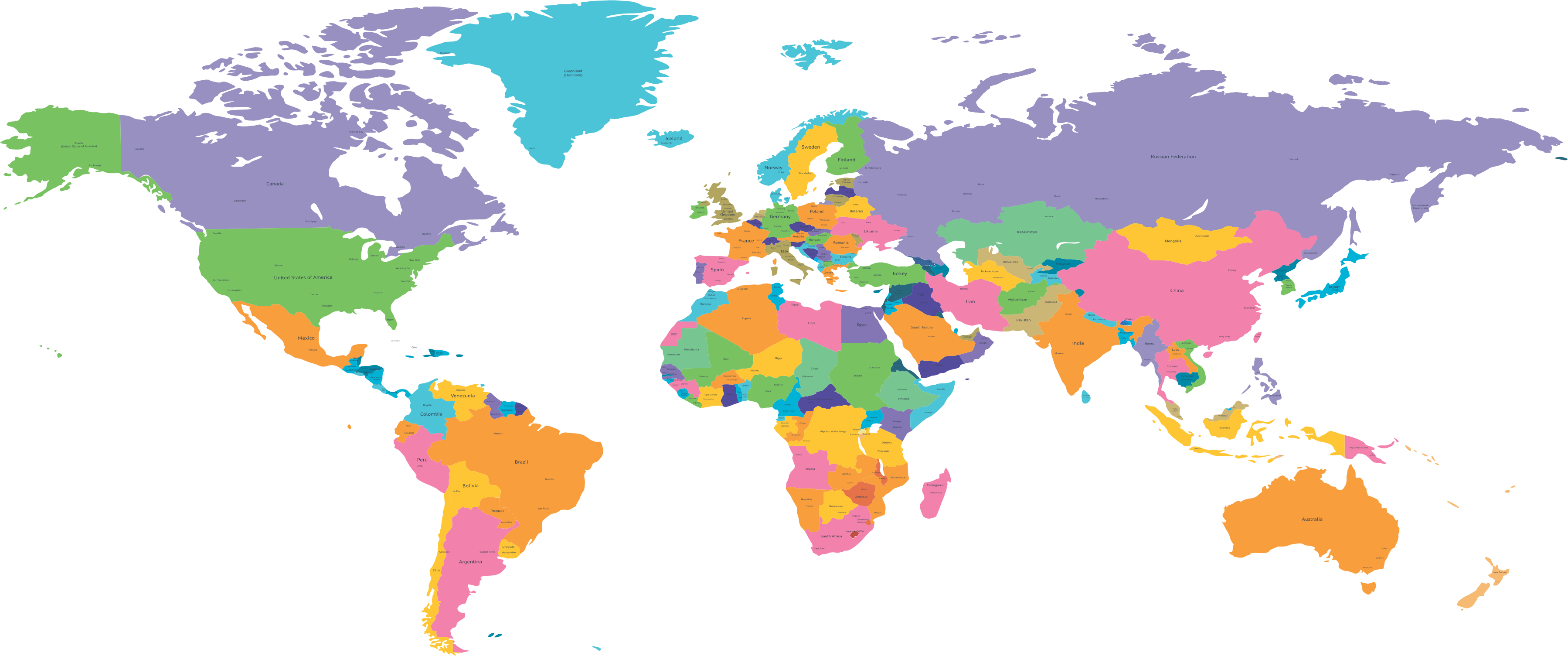An Integrated Assessment of Climatic and Non-Climatic Determinants of Wheat Production and Food Security in Pakistan
DOI:
https://doi.org/10.62997/rl.2025.41046Keywords:
Wheat Production, Climate Change, ARDL Model, Water Availability, Fertilizer Use, Agricultural Policy, PakistanAbstract
Wheat is a staple crop in Pakistan and its production is directly linked with ensuring national food security. Pakistan is amongst the top ten counties which have been adversely affected by climate change. The wheat yield heavily depends on the climate variability and farmers’ economic constraints. This study was carried out to integrate climatic and economic variables into a single analytical model using the Autoregressive Distributed Lag (ARDL) approach. The data from 1995 to 2024 was derived from secondary sources of Government of Pakistan. The model showed highest robustness and withstood necessary validation. The model captured both short-run and long-run relationships between wheat production and key variables such as temperature, rainfall, water availability, and fertilizer use. The results indicated that in the short run, water availability and fertilizer use had the most significant positive effect on wheat production while excessive rainfall showed a delayed negative impact. In the long run, all variables positively influenced wheat production, yet water availability and fertilizer use played the most critical role. These findings underscored the importance of effective water management and input optimization in maintaining and improving wheat yields under changing climatic conditions. It was recommended that the irrigation efficiency may be enhanced along with promotion of timely and balanced fertilizer application. The climate-smart practices such as use of drought-resistant varieties and precision farming may also be encouraged by the government. Meanwhile, supporting research and policy development were deemed to be essential for building resilience and ensuring long-term food security.
References
Abbas, S., Kousar, S., & Khan, M. S. (2022). The role of climate change in food security; empirical evidence over Punjab regions, Pakistan. Environmental Science and Pollution Research, 29(35), 53718-53736. doi:https://doi.org/10.1007/s11356-022-19315-7
AHMAD, T., & Saboor, A. (2022). Food security in Pakistan and need for public policy adjustments. Policy Perspectives, 19(2), 89-122. doi:https://www.jstor.org/stable/48734162
Akhtar, I. u. H., & Athar, H. (2020). Water supply and effective rainfall impacts on major crops across irrigated areas of Punjab, Pakistan. Theoretical and Applied Climatology, 142, 1097-1116. doi:https://doi.org/10.1007/s00704-020-03337-7
Ali, S., Liu, Y., Ishaq, M., Shah, T., Abdullah, Ilyas, A., & Din, I. U. (2017). Climate change and its impact on the yield of major food crops: Evidence from Pakistan. Foods, 6(6), 39. doi: https://doi.org/10.3390/foods6060039
Arshad, M., Amjath-Babu, T., Aravindakshan, S., Krupnik, T. J., Toussaint, V., Kächele, H., & Müller, K. (2018). Climatic variability and thermal stress in Pakistan’s rice and wheat systems: A stochastic frontier and quantile regression analysis of economic efficiency. Ecological indicators, 89, 496-506. doi:https://doi.org/10.1016/J.ECOLIND.2017.12.014
Azmat, M., Ilyas, F., Sarwar, A., Huggel, C., Vaghefi, S. A., Hui, T., . . . Ahmed, Z. (2021). Impacts of climate change on wheat phenology and yield in Indus Basin, Pakistan. Science of the Total Environment, 790, 148221. doi:https://doi.org/10.1016/J.SCITOTENV.2021.148221
Baocheng, H., Jamil, A., Bellaoulah, M., Mukhtar, A., & Clauvis, N. K. (2024). Impact of climate change on water scarcity in Pakistan. Implications for water management and policy. Journal of Water and Climate Change, 15(8), 3602-3623. doi:https://doi.org/10.2166/wcc.2024.710
Barrett-Lennard, E. G., George, N., D’Antuono, M., Holmes, K. W., & Ward, P. R. (2024). Rain and potential evapotranspiration are the main drivers of yield for wheat and barley in southern Australia: insights from 12 years of National Variety Trials. Crop and Pasture Science, 75(6). doi:https://doi.org/10.1071/CP23320
Ben Mariem, S., Soba, D., Zhou, B., Loladze, I., Morales, F., & Aranjuelo, I. (2021). Climate change, crop yields, and grain quality of C3 cereals: A meta-analysis of [CO2], temperature, and drought effects. Plants, 10(6), 1052. doi:https://doi.org/10.3390/plants10061052
Challinor, A. J., Watson, J., Lobell, D. B., Howden, S. M., Smith, D., & Chhetri, N. (2014). A meta-analysis of crop yield under climate change and adaptation. Nature climate change, 4(4), 287-291. doi:https://doi.org/10.1038/NCLIMATE2153
Chandio, A. A., Gokmenoglu, K. K., & Ahmad, F. (2021). Addressing the long-and short-run effects of climate change on major food crops production in Turkey. Environmental Science and Pollution Research, 28(37), 51657-51673. doi:https://doi.org/10.1007/s11356-021-14358-8
Ding, Z., Ali, E. F., Elmahdy, A. M., Ragab, K. E., Seleiman, M. F., & Kheir, A. M. (2021). Modeling the combined impacts of deficit irrigation, rising temperature and compost application on wheat yield and water productivity. Agricultural Water Management, 244, 106626. doi:https://doi.org/10.1016/j.agwat.2020.106626
GCRI. (2021). Global Climate Risk Index 2021. Retrieved from
GoP. (2018). National Nutrition Survey 2018, Nutrition Wing, Ministry of National Health Services, Regulations and Coordination, Government of Pakistan, Islamababad. Retrieved from
GoP. (2024). Economic Survey of Pakistan 2023-24, Agriculture Chapter, Ministry of Finance, Government of Pakistan, Islamabad. . Retrieved from https://finance.gov.pk/survey_2024.html
Gul, A., Chandio, A. A., Siyal, S. A., Rehman, A., & Xiumin, W. (2022). How climate change is impacting the major yield crops of Pakistan? an exploration from long-and short-run estimation. Environmental Science and Pollution Research, 29(18), 26660-26674. doi:https://doi.org/10.1007/s11356-021-17579-z
Huang, X., Xu, X., Zhu, Q., & Zhang, Y. (2024). Optimizing water and nitrogen inputs for sustainable wheat yields and minimal environmental impacts. Agricultural Systems, 220, 104061. doi:https://doi.org/10.1016/j.agsy.2024.104061
Kiani, A., & Iqbal, T. (2018). Climate change impact on wheat yield in Pakistan (An Application of ARDL Approach). NUST Journal of Social Sciences and Humanities, 4(2), 240-262. doi:https://doi.org/10.51732/NJSSH.V4I2.34
Knox, J., Hess, T., Daccache, A., & Wheeler, T. (2012). Climate change impacts on crop productivity in Africa and South Asia. Environmental research letters, 7(3), 034032. doi:https://doi.org/10.1088/1748-9326/7/3/034032
Li, N., Zhou, C., Sun, X., Jing, J., Tian, X., & Wang, L. (2018). Effects of ridge tillage and mulching on water availability, grain yield, and water use efficiency in rain-fed winter wheat under different rainfall and nitrogen conditions. Soil and Tillage Research, 179, 86-95. doi:https://doi.org/10.1016/J.STILL.2018.01.003
Liu, X., Ma, Q., Yu, H., Li, Y., Zhou, L., He, Q., . . . Zhou, G. (2020). Responses of plant biomass and yield component in rice, wheat, and maize to climatic warming: A meta-analysis. Planta, 252, 1-13. doi:https://doi.org/10.1007/s00425-020-03495-y
Lu, F., Feng, B., Chen, L., Qiu, J., & Wei, X. (2025). How Does Rice Cope with High-Temperature Stress During Its Growth and Development, Especially at the Grain-Filling Stage? Agronomy, 15(3).
Mahmood, N., Arshad, M., Kächele, H., Ma, H., Ullah, A., & Müller, K. (2019). Wheat yield response to input and socioeconomic factors under changing climate: Evidence from rainfed environments of Pakistan. Science of the Total Environment, 688, 1275-1285. doi:https://doi.org/10.1016/J.SCITOTENV.2019.06.266
Miriam Wiemers, M. B., Asja Hanano, Réiseal Ní Chéilleachair, Aimée Vaughan, Connell Foley,, & Holger Mann, D. W., Katrin Radtke, Heidi Fritschel (2024). Global Hunger Index 2024: How gender justice can advance climate change resilience and zero hunder,Berlin, Germany. Retrieved from https://www.globalhungerindex.org/pdf/en/2024.pdf
Mon, J., Bronson, K., Hunsaker, D., Thorp, K., White, J., & French, A. (2016). Interactive effects of nitrogen fertilization and irrigation on grain yield, canopy temperature, and nitrogen use efficiency in overhead sprinkler-irrigated durum wheat. Field Crops Research, 191, 54-65. doi:https://doi.org/10.1016/J.FCR.2016.02.011
Patanita, M., Tomaz, A., Ramos, T., Oliveira, P., Boteta, L., & Dôres, J. (2019). Water regime and nitrogen management to cope with wheat yield variability under the Mediterranean conditions of southern Portugal. Plants, 8(10), 429. doi:https://doi.org/10.3390/plants8100429
Raimondo, M., Nazzaro, C., Marotta, G., & Caracciolo, F. (2021). Land degradation and climate change: Global impact on wheat yields. Land Degradation & Development, 32(1), 387-398. doi:https://doi.org/10.1002/ldr.3699
Rasul, G., & Ahmad, B. (2012). Climate change in Pakistan. Pakistan Meteorological Department.
Raza, M. H., Bakhsh, A., & Kamran, M. (2019). Managing climate change for wheat production: An evidence from southern Punjab, Pakistan. Journal of Economic Impact, 1(2), 48-58. doi:https://doi.org/10.52223/jei0102193
Schierhorn, F., Hofmann, M., Gagalyuk, T., Ostapchuk, I., & Müller, D. (2021). Machine learning reveals complex effects of climatic means and weather extremes on wheat yields during different plant developmental stages. Climatic Change, 169(3), 39. doi: https://doi.org/10.1007/s10584-021-03272-0
Shah, S. A. A., Wu, H., Farid, M. F., Tareen, W.-U.-H., & Badar, I. H. (2024). Climate Trends and Wheat Yield in Punjab, Pakistan: Assessing the Change and Impact. Sustainability, 16(11), 4443. doi:https://doi.org/10.3390/su16114443
Shayanmehr, S., Rastegari Henneberry, S., Sabouhi Sabouni, M., & Shahnoushi Foroushani, N. (2020). Drought, climate change, and dryland wheat yield response: An econometric approach. International Journal of Environmental Research and Public Health, 17(14), 5264. doi:https://doi.org/10.3390/ijerph17145264
Tomaz, A., Palma, J. F., Ramos, T., Costa, M. N., Rosa, E., Santos, M., . . . Patanita, M. (2021). Yield, technological quality and water footprints of wheat under Mediterranean climate conditions: A field experiment to evaluate the effects of irrigation and nitrogen fertilization strategies. Agricultural Water Management, 258, 107214. doi:https://doi.org/10.1016/j.agwat.2021.107214
Wakeel, A., Kiran, A., Shahid, M. R., Bano, Z., & Zia, M. H. (2022). Trends in nitrogen use and development in Pakistan. Nitrogen Assessment, 73-97. doi:https://doi.org/10.1016/b978-0-12-824417-3.00002-2
Wan, C., Dang, P., Gao, L., Wang, J., Tao, J., Qin, X., . . . Gao, J. (2022). How does the environment affect wheat yield and protein content response to drought? A meta-analysis. Frontiers in plant science, 13, 896985. doi:https://doi.org/10.3389/fpls.2022.896985
Wang, Y., Peng, Y., Lin, J., Wang, L., Jia, Z., & Zhang, R. (2023). Optimal nitrogen management to achieve high wheat grain yield, grain protein content, and water productivity: A meta-analysis. Agricultural Water Management, 290, 108587. doi:https://doi.org/10.1016/j.agwat.2023.108587
Wilcox, J., & Makowski, D. (2014). A meta-analysis of the predicted effects of climate change on wheat yields using simulation studies. Field Crops Research, 156, 180-190. doi:https://doi.org/10.1016/J.FCR.2013.11.008
Yu, L., Zhao, X., Gao, X., & Siddique, K. H. (2020). Improving/maintaining water-use efficiency and yield of wheat by deficit irrigation: A global meta-analysis. Agricultural Water Management, 228, 105906. doi:https://doi.org/10.1016/j.agwat.2019.105906




